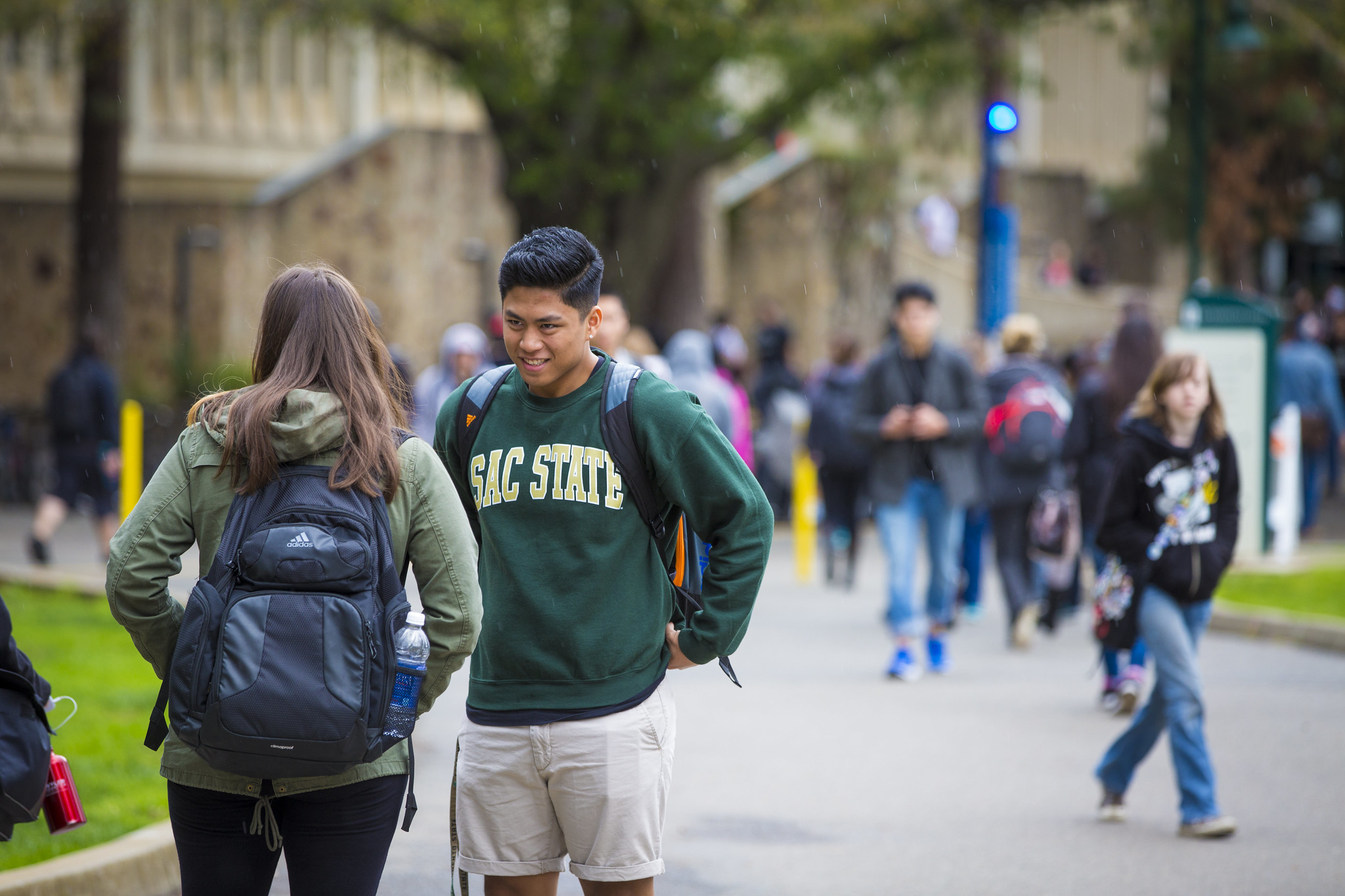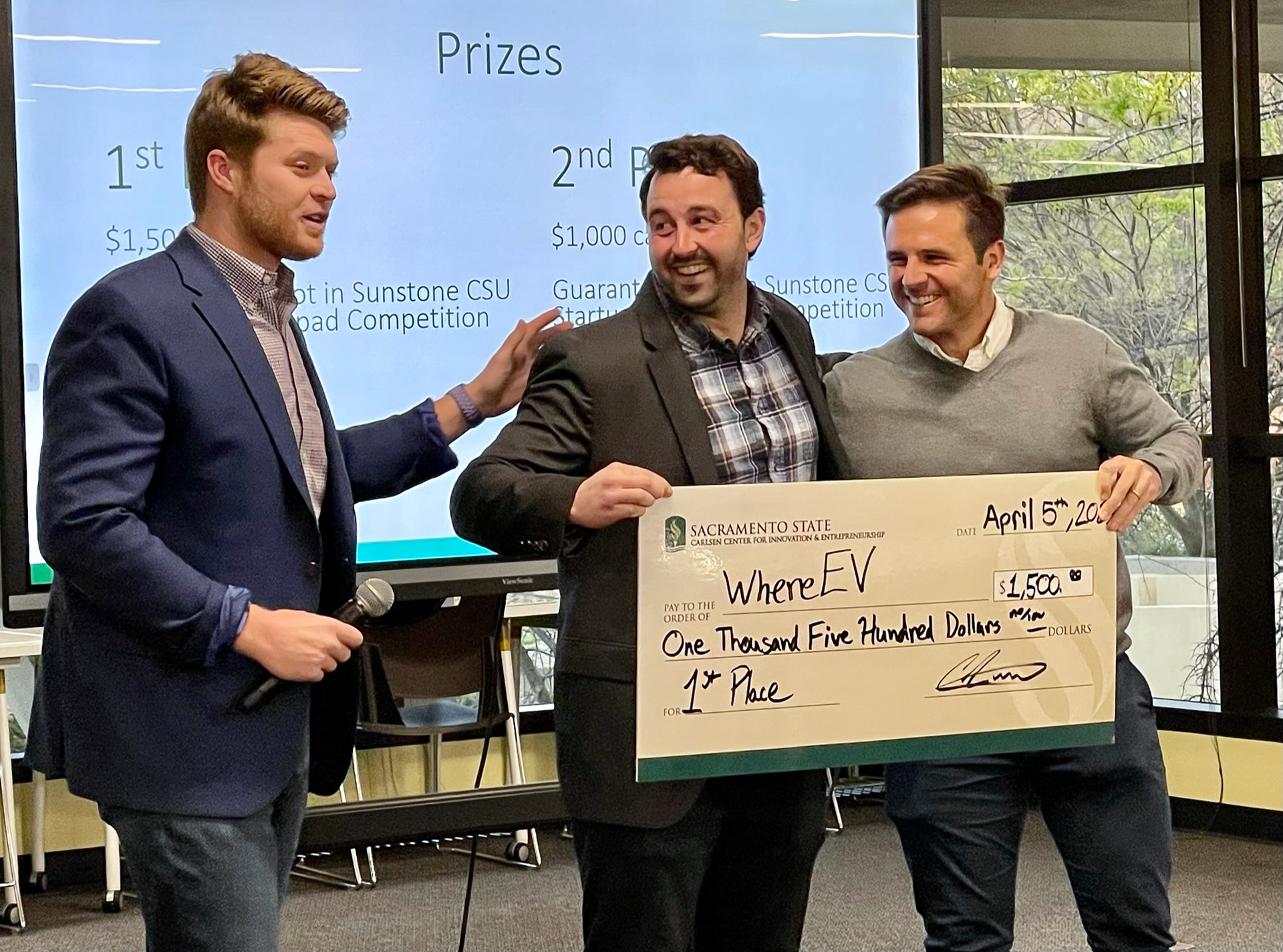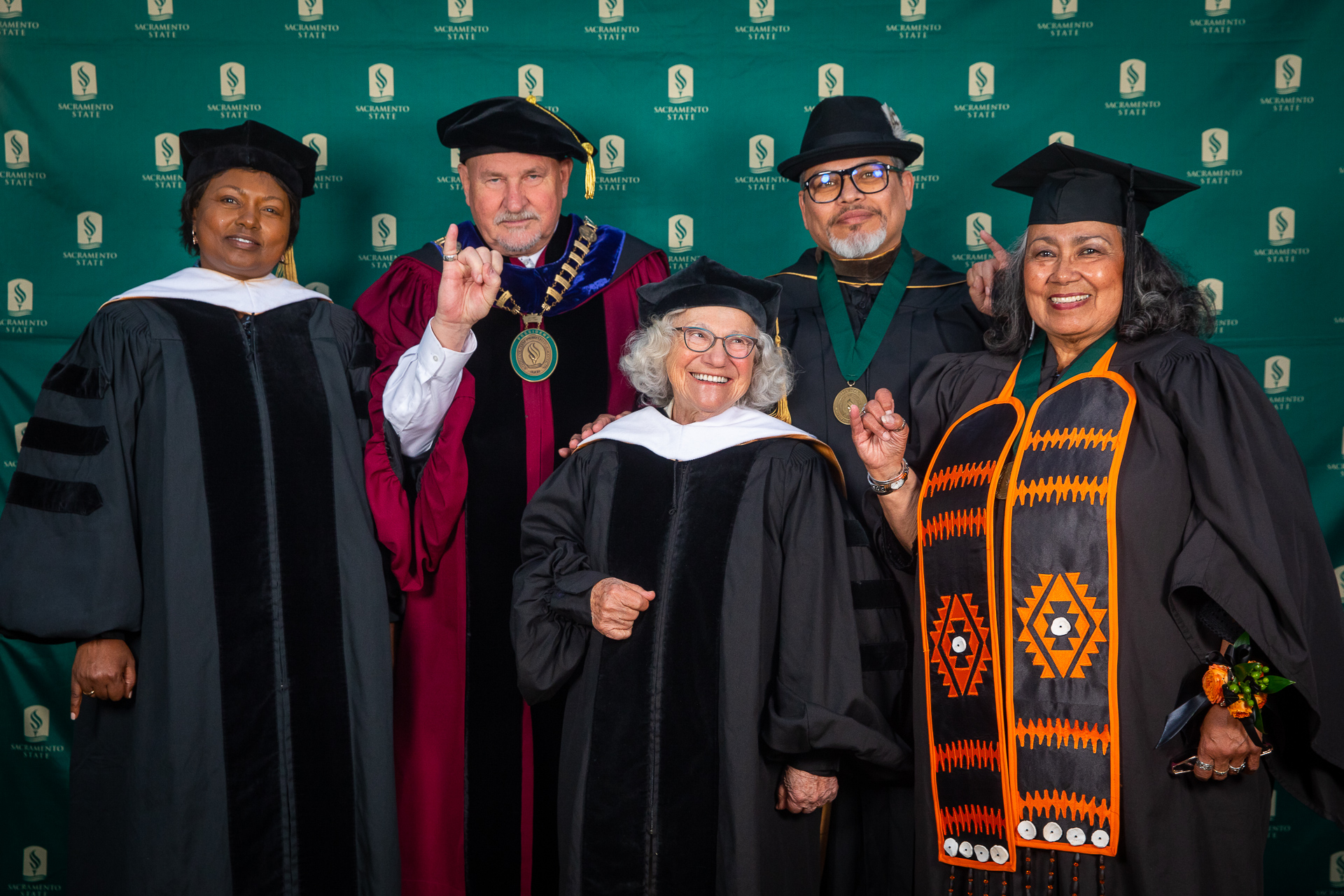Story Content
Sac State hosts more than 1,400 California K-12 students for National History Day competition
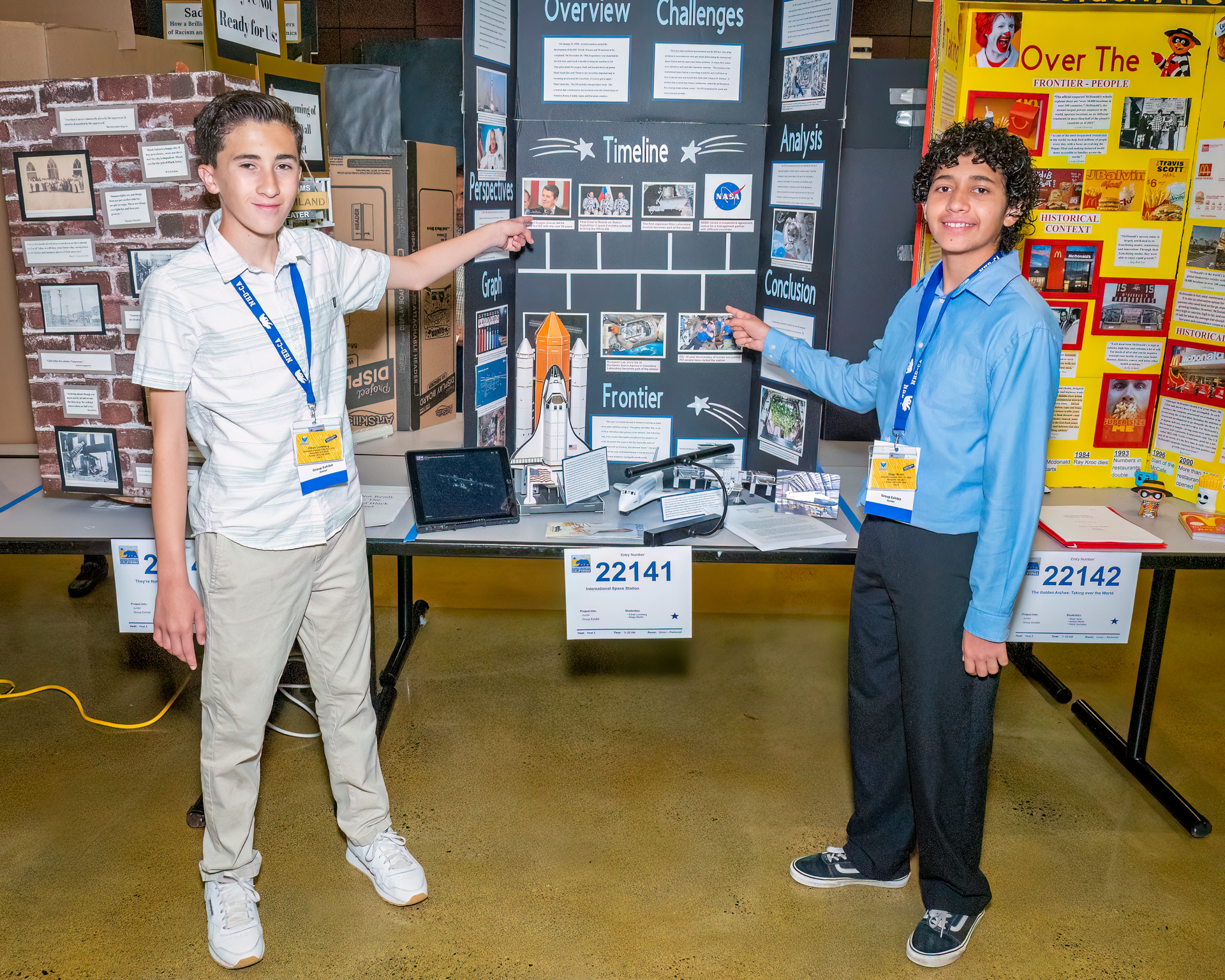
April 19, 2023
Sitting in the University Union three hours before he and his team were to present their exhibit on the automobile’s effects on U.S. postwar infrastructure, Braedan Grant was in a good mood.
“Our interviews have gone well in previous (competitions),” said Grant, a junior from Menlo-Atherton High School, south of San Francisco. “We don’t know what to expect from state and how it will differ, but I’m feeling pretty good about it.”
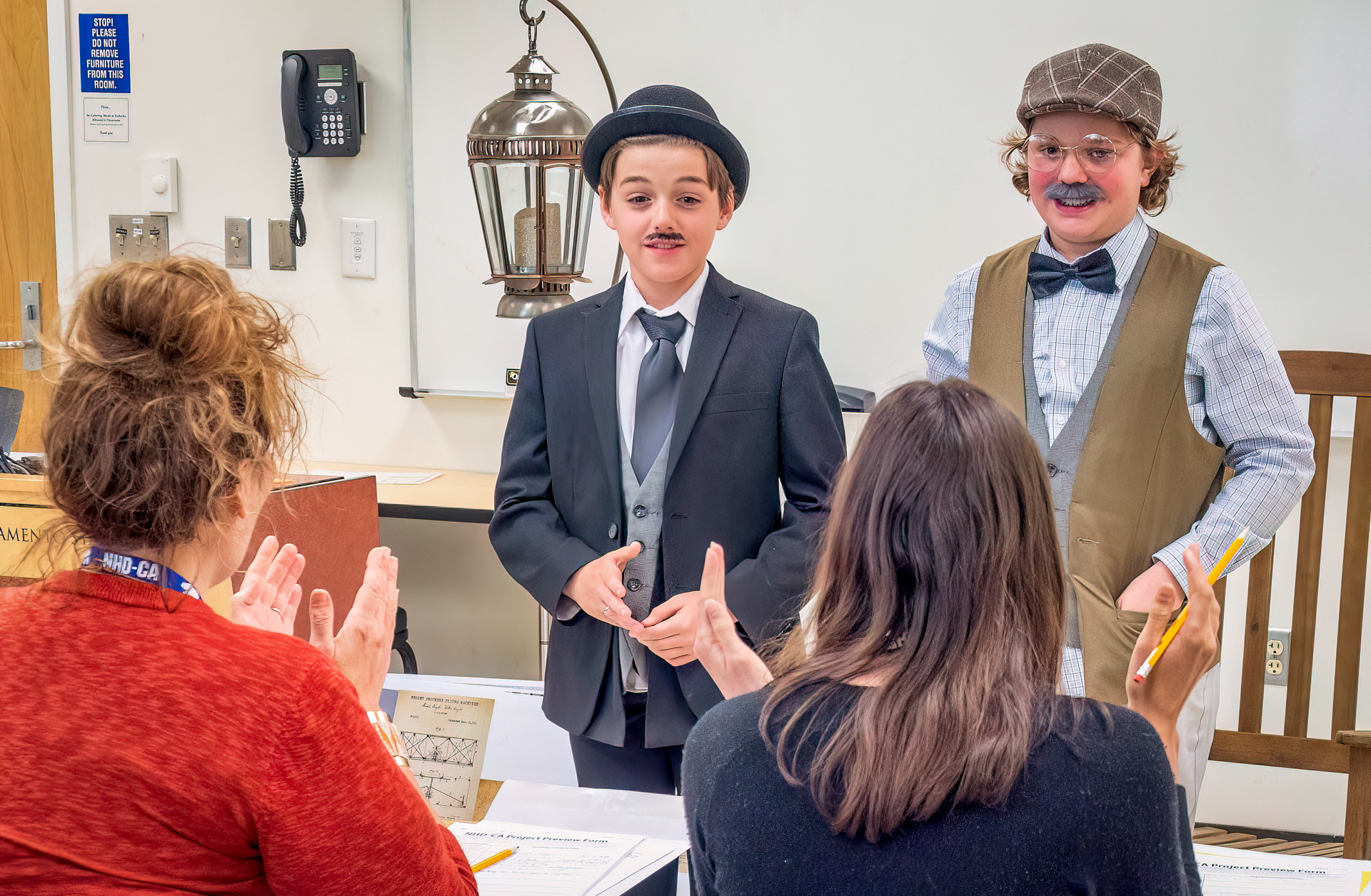
Grant was one of more than 1,400 California K-12 students who came to Sacramento State for the statewide National History Day competition April 15-16, presenting their historical research projects and hoping to advance to the national competition later this year.
The event provided Sacramento State students and faculty an opportunity to serve as judges and volunteers while strengthening the University’s ties to local schools.
“History Day is a fantastic program, and participating in the contest is some of the most fun that I have all year,” said Chloe Burke, a Sac State associate professor of History who has volunteered at the competition for 10 years. “I love the insights that I hear from young students.”
National History Day introduces students to the historical research process and exposes them to events or people with whom they may not be familiar. The contest is open nationally to sixth- through 12th-grade students, though California also allows fourth- and fifth-graders to compete up to the state level.
Students are encouraged to focus their research on a specific theme, which this year is “Frontiers in History: People, Places, Ideas.”
In California, countywide competitions were held in January, February, and March, with the winners invited to the statewide competition. Winners at the statewide event advanced to the national competition to be held in June in Maryland.
The Sacramento County Office of Education (SCOE) serves as the lead agency for National History Day – California.
“As a longtime advocate for history and civic learning and engagement, I’m convinced that History Day is an outstanding way to promote interest in history among students and support teachers in building interest in history more effectively with our young people,” said David W. Gordon, Sacramento County school superintendent. “Thanks to our SCOE staff and the many volunteers, we have an outstanding program that is foundational in becoming a more diverse, equitable, and inclusive society.”
This year’s event marked the first time Sac State hosted the statewide competition, but the University’s connection goes back several years. Soon after she began volunteering for National History Day, Burke began to explore how to deepen it.
“I started thinking, ‘What can we be doing at Sac State to help support our local History Day students and teachers?’ ” Burke said. “How can we be helping them to develop effective and quality projects to be successful and move on (in the competition), but also to really immerse them in the process of doing historical research?”
She partnered with the University Library to provide workshops for NHD participants on how to use the Sacramento Public Library’s resources for their research. Eventually, she landed on the event’s coordinating committee, while several faculty colleagues and students also volunteered.
Participating K-12 students begin their National History Day work in the fall, when they decide on their theses and begin researching. They must use primary references – for example, recordings or writings from people who lived the event or period – and secondary references such as history books or newspaper articles.
Elementary students typically produce posters, such as those seen at science fairs. Middle- and high-schoolers can make a poster, documentary, website, podcast, short skit, or research paper.
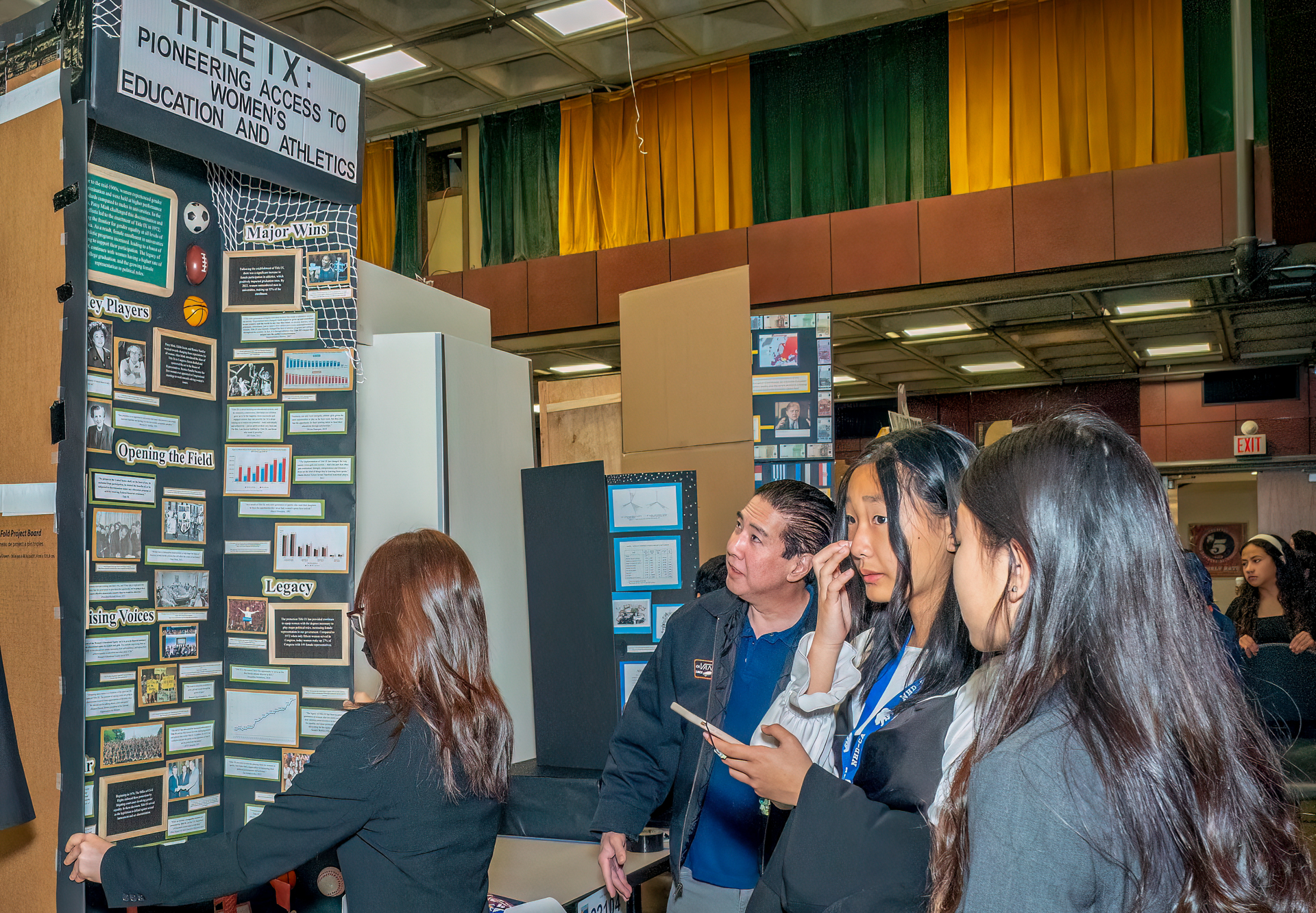
Panels of judges – which at the state competition included K-12 teachers as well as Sac State faculty, graduate students, and upper-division undergraduate students – evaluate the projects.
Ryun Ortiz, a senior History major who hopes to become a teacher and eventually a college professor, was a judge for the county- and state-level competitions and said he appreciated the opportunity to share his love of history with younger students.
“At that age, I didn’t know what I wanted to do,” he said. “Now I like history and social sciences, but it didn’t really click until college. My personal goal was just to get that passion going at an early age.”
Elvy Seyman, a recent Sac State alum who will begin a teaching credential program later this summer, said, “Judging for National History Day is my favorite thing I do all year.
“Participating in the competition for the last five years really cemented for me that I wanted to be an educator. The work the students produce consistently blows me away.”
Through its Anchor University community engagement initiative, Sac State has a “central role to play” in increasing participation of K-12 and Sac State students, Burke said. She recently launched a course that will give students between one and three credits for volunteering during National History Day events.
Grant and his Menlo-Atherton project partner, Colin Smith, both agreed the experience was a good one.
“I really enjoyed getting into the meat of (a subject) instead of doing general overviews,” said Smith, adding that he was surprised at the difficulty of vetting historical sources. “I don’t think I had any experience before this where I really had to do it in a proper manner that would hold up against someone actually looking at it.
“Coming out more experienced … is always the goal of these things.”
Media Resources
Faculty/Staff Resources
Looking for a Faculty Expert?
Contact University Communications
(916) 217-8366
communications@csus.edu
